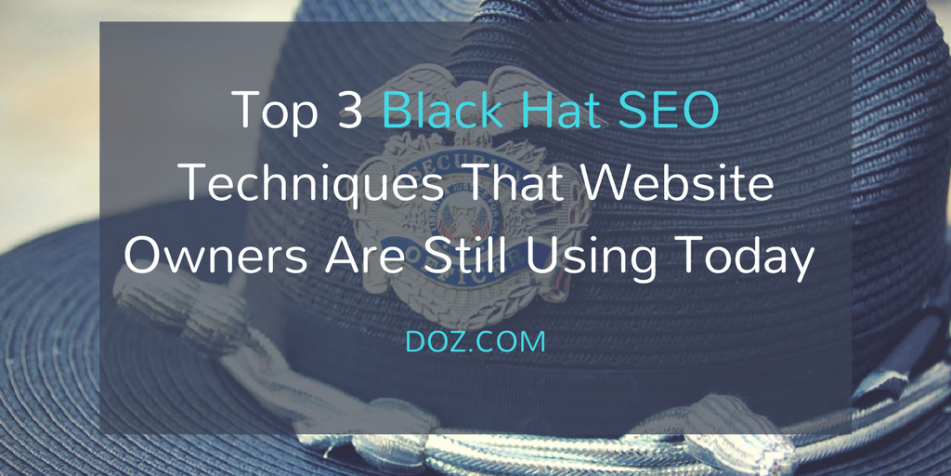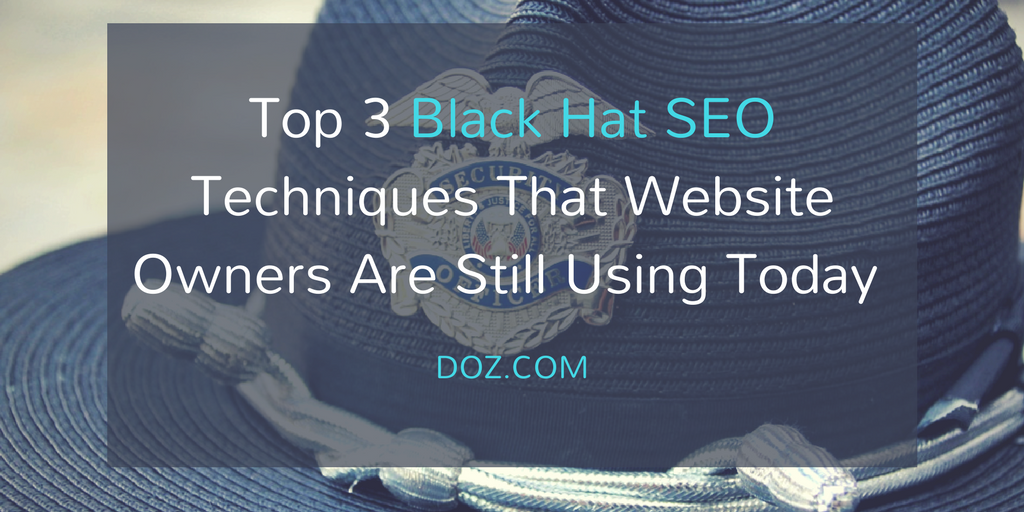Top 3 Black Hat SEO Techniques That Website Owners Are Still Using Today and Why You Should Avoid Them
Optimizing your site and content for search engines is the only way to increase visibility for your brand. There are specific techniques – the White Hat Techniques of SEO that Google approves of and then there are the Black Hat Techniques that Google hates. A considerable portion of website owners and marketers are right now using several of these Black Hat techniques without even realizing so. A claim to ignorance does not help your case with Google. You need to know about these aberrant methods and stop using them before the effects start to show on your website ranking in the SERPs. If your ranks and website traffic are already suffering, you must undo these techniques and invest in proper Google-approved SEO. Are you thinking about hiring an SEO company? Have you considered reaching out to an SEO professional, but aren’t certain but they can really bring to your business? If you want to grow and do it without wasting time and money on SEO, then you should hire the rank way SEO reseller.
According to the leading San Diego SEO Company, here are the three most common black hat techniques you may be using right now:
Cloaking
Cloaking is a violation of Google Webmaster Guidelines, and Google is quite vocal about disapproving this method even today. If you are showing HTML text to your search engine bots and serving Flash pages to your users, you are using cloaking to increase your footfall. Another prominent form of cloaking is when you are inserting keywords into text only when the crawlers are requesting the webpage and not for a human user. Therefore, it is nothing more than misleading the crawlers into perceiving the content differently than it indeed appears to your human visitors.
As per SEO genius Matt Cutts, there is nothing called white hat cloaking. Vying for visibility using any manipulation of the content as it appears to search engine bots is extremely dangerous to the reputation of your website. Always remember that search engines do not like being misled. Do not risk your website visibility and repute by employing any of the “acceptable” cloaking techniques. In fact, automobile giant BMW felt the brunt of Google’s anger back in February 2006 when the search engine blacklisted their website for violation of the Google Webmaster Guidelines in a very similar manner.
Using gateway pages
These are content-poor but keyword rich pages that several websites use to attract search engine favors. In spite of Google’s gateway page penalty updates back in 2015, multiple sites still employ these doorway pages because they fallaciously believe them to be good for their ranking efforts. Simply speaking, they have only one purpose – they are ideal for spamdexing. They contain no real informational value.
In most cases, the user often experiences an instant redirection using JavaScript or fast meta refresh to another page that is entirely different from the page they initially saw on the search engine SRL. Many of the doorway pages that black hatters use today are products of Perl and PHP. These scripting languages allow the creation of dynamic pages that generate changeable webpage content to the search engine crawlers.
Landing pages are NOT doorway pages. Even the most sophisticated doorway page design includes a minimum amount of design, least attention to user-friendliness and very less information-rich content. Advance black hat SEO systems often use cloaking to present these content-rich SEO pages to the search engines and the real pages to the human visitors.
Content spinning
It is one of the most old-school and yet one of the most popular black hat techniques that one might find today. Many websites are still using it without realizing the harmful effects of the same. The practice of rewriting old high ranking content without incorporating new information is content spinning. It is an effort to present old content as fresh to search engine bots.
The simplest way to produce spun content is by using the rewriting software. There are thousands of such software programs online that can re-present old content in a new form just to avoid plagiarism and duplication allegations by crawlers and site owners. In fact, one article becomes the source of several new articles at times, and these articles pay the least importance to user satisfaction.
Google algorithm updates include several changes to detect such spun content. There is no way a website can escape Google’s keen scrutiny when it comes to website content quality and duplication checks. Several websites never see the light of day just because their content quality is below par. The search engine giant heavily penalizes sites that use this technique to gain SEO favors.
These are the three most common black hat techniques people are using even today. There are avenues of turning these exact techniques into White Hat practices. The only way to keep your site safe is to steer clear of them and adopt organic methods that earn the trust of crawlers to climb to the top of the ranks.




19 Comments
Pingback: Top San Diego SEO Secrets - BC net
Pingback: Top San Diego SEO Secrets – Mismasina
Pingback: What Does San Diego SEO Mean? - Health Care Clinic
Pingback: What You Do Not Know About San Diego SEO - Modisseny
Pingback: The Most Incredibly Ignored Answer for San Diego SEO – Smart Arts Fund
Thick, curly hair can be a challenge, but these hairstyles make it easy to look fabulous.
Our website compiles unforgettable experiences that make a trip to Turkey truly special. Don’t miss out!
Sutter Health
968373 289058I adore your wp design, wherever did you download it by means of? 318654
797300 588654my English teacher hate me cause i maintain writing about somebody from The WANTED called Jay, she gives me evils and low 254873
542445 947278Hi there! Nice stuff, please do tell me when you finally post something like this! 924206
coffee jazz
My brother recommended I might like this web site.
He was totally right. This post actually made my day.
You can not imagine just how much time I had
spent for this information! Thanks!
162369 714323You created various excellent points there. I did a search on the subject and found a lot of people will have the same opinion along with your blog. 604434
Very nice blog post. I definitely love this site. Stick with it! .
Thank you for great information. I look forward to the continuation.
Nice post. I learn something totally new and challenging on websites
very informative articles or reviews at this time.
290212 487979great post, very informative. 626638